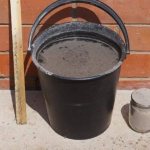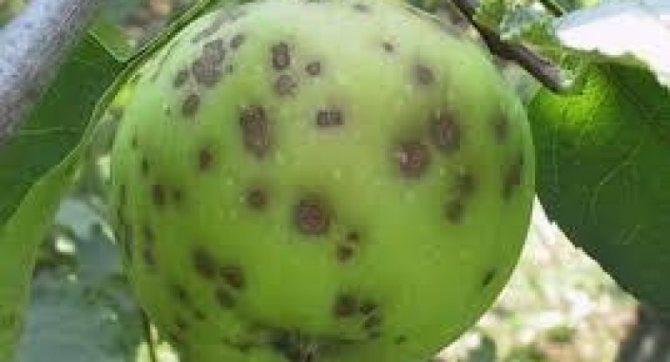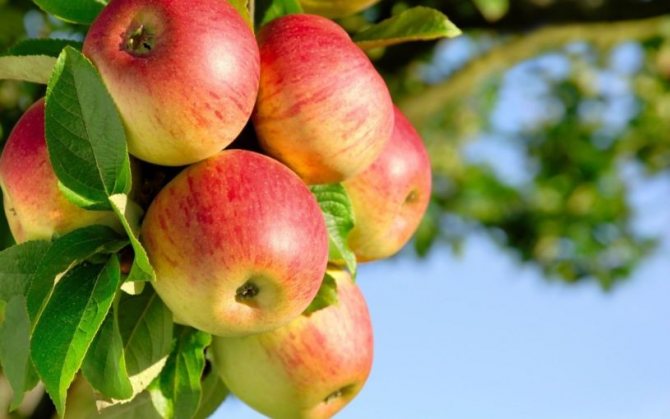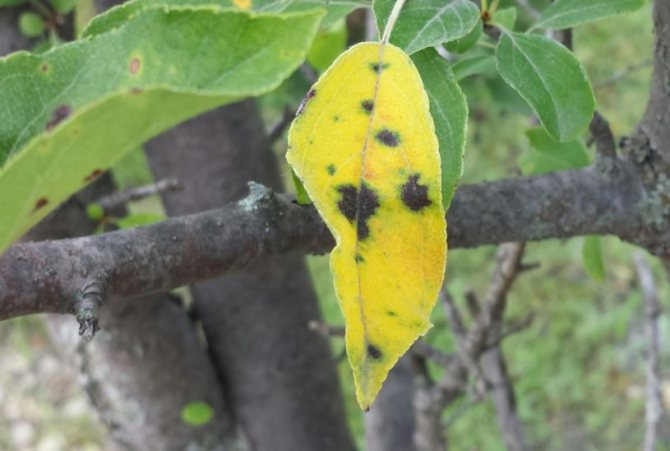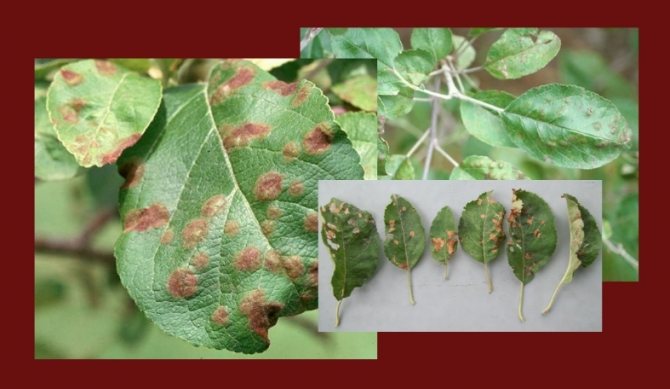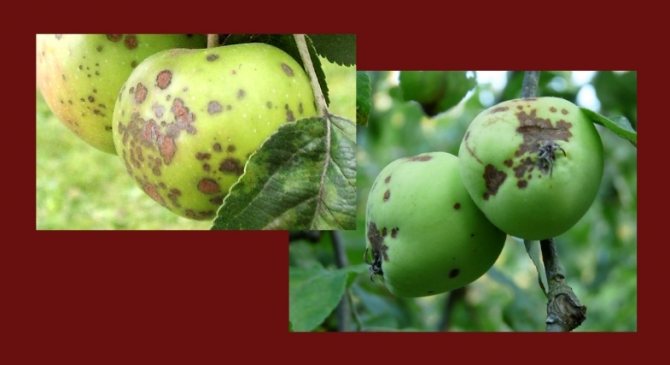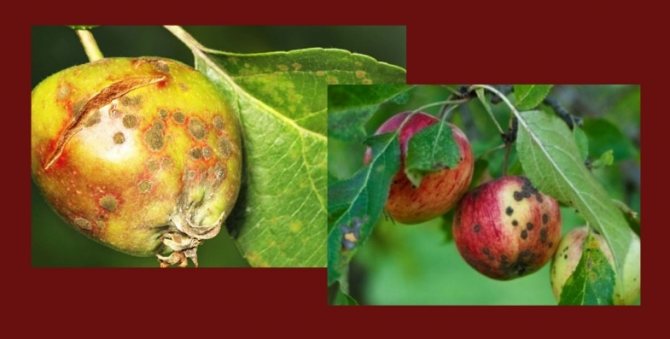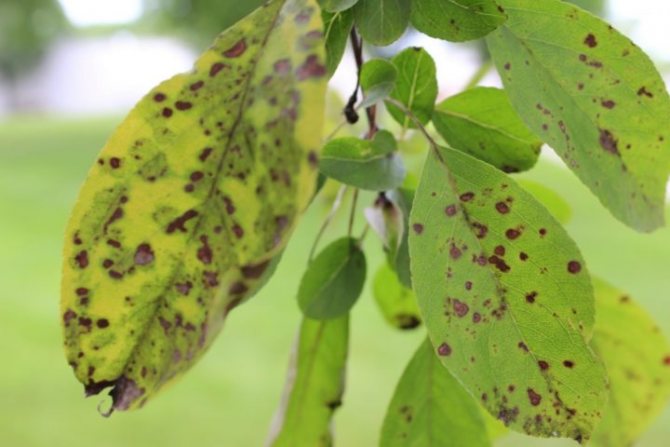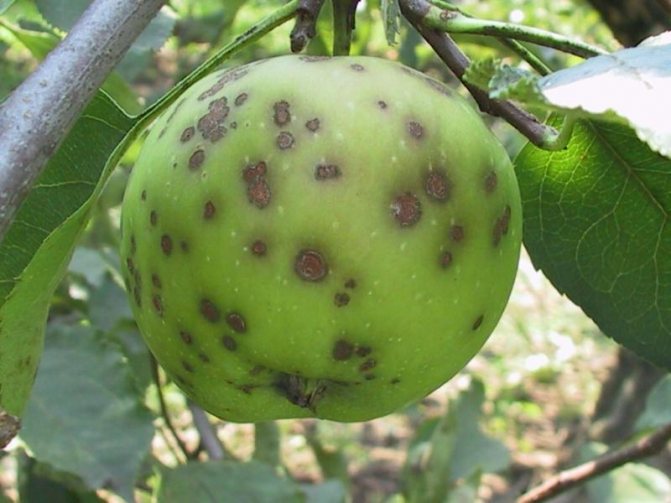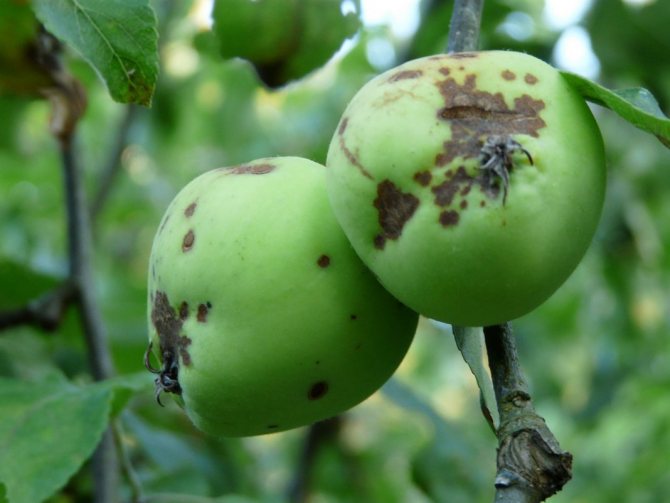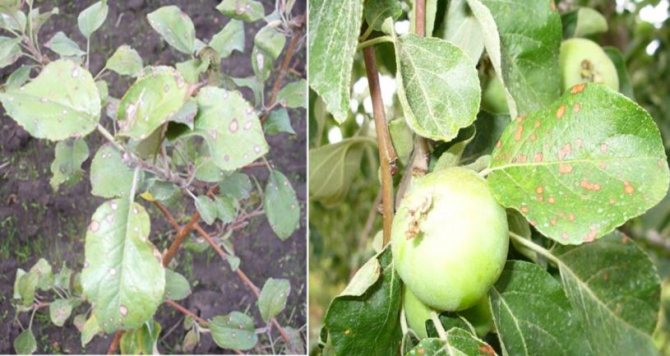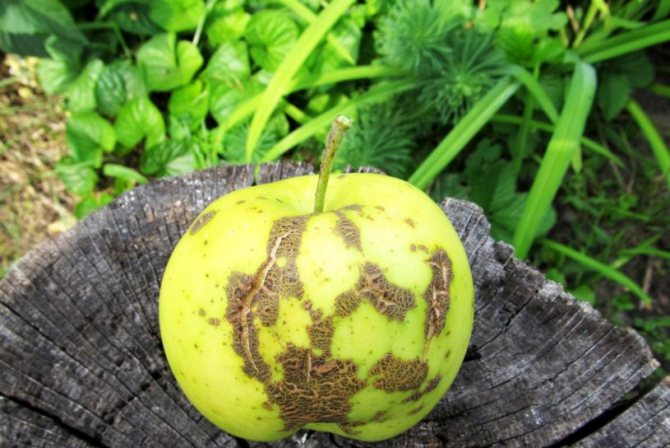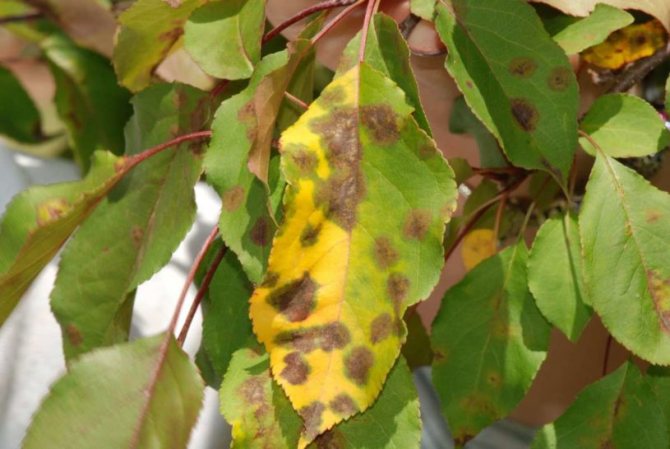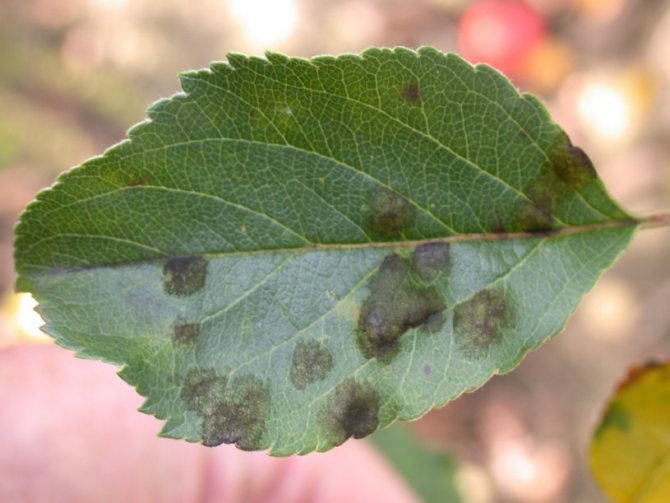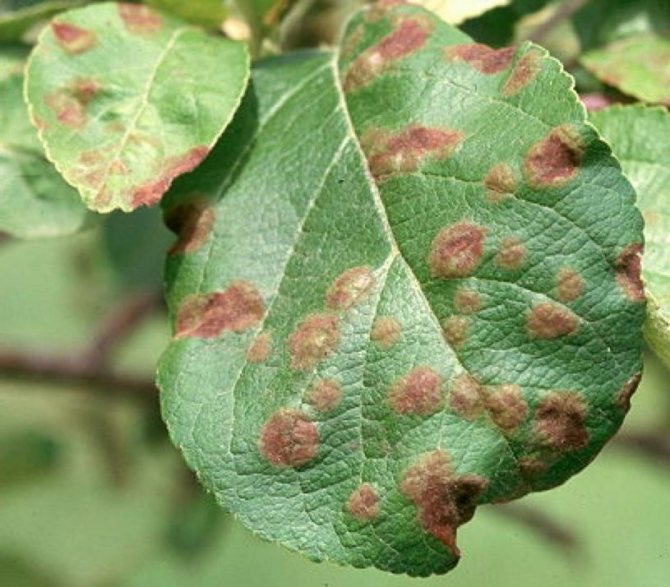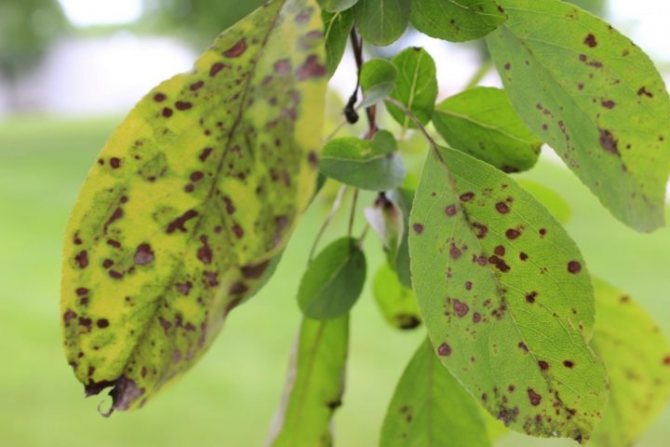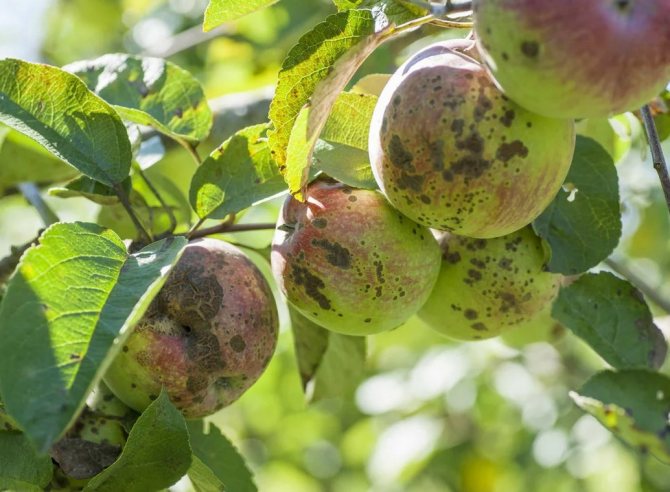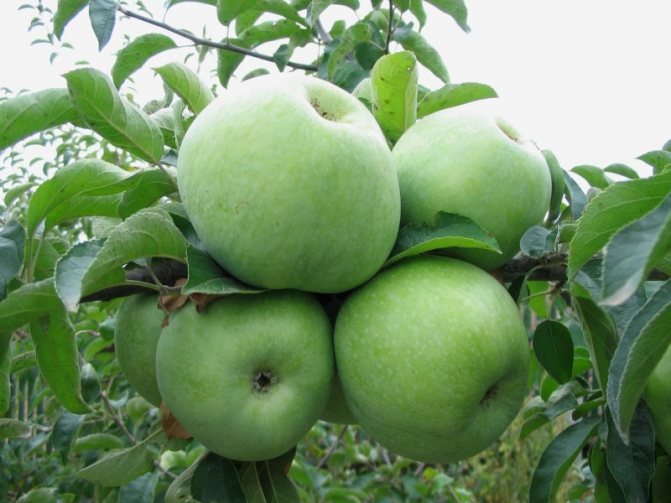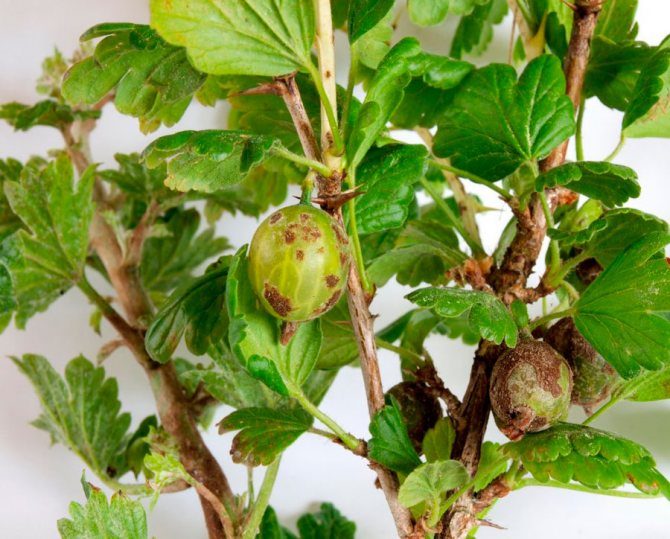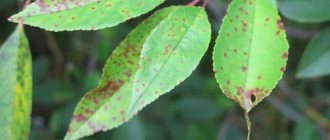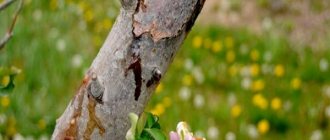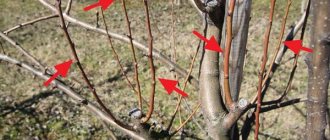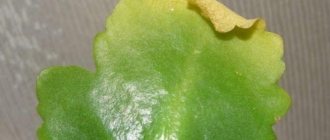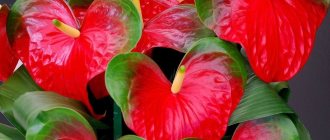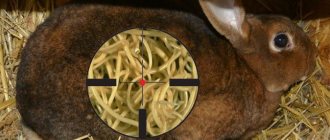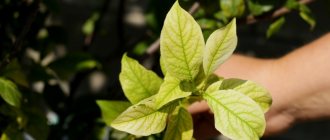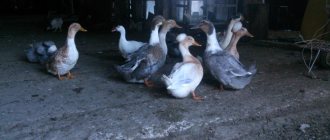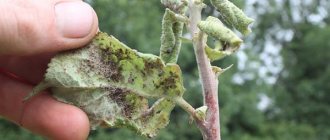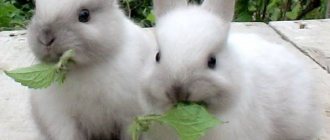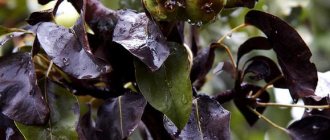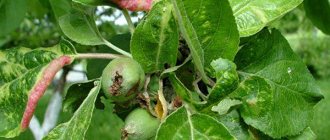In comparison with other diseases of apple trees, scab is perhaps the most common. Almost every gardener came across it, but not everyone gave this disease the status of a dangerous and requiring urgent intervention. Of course, in order for the apple tree to die, the scab needs to be tried very hard. But even without the worst outcome, there will be a lot of problems when it appears. The quality of the fruit will decrease - the apples will be crushed, they will lose their good taste, a significant part of their vitamins and will be less stored. The tree itself, weakened by the disease, will no longer be so resistant to winter cold and even outwardly will not be so attractive. If you do not like this prospect, then feel free to get down to business.
- 2 Initiation of treatment
- 3 Basic rules
- 4 Chemical methods
4.1 Chemicals for scab control
Signs
Scab is a bacterial disease that fruit trees are especially fond of. Her insidiousness lies in the fact that the first signs are disguised as other diseases - novice gardeners are lost, do not take the necessary actions, and then the time is irretrievably lost. This article will tell you about the processing of apple trees in spring.
A cold, wet spring is a favorite environment for scab. That is why the disease is most often diagnosed in areas with a temperate climate.
In rains, scab can affect up to 90% of all trees in the garden, it reduces yields and degrades the quality of apples. Affected fruits lose their vitamin value, are poorly stored, and become ugly. In some cases, the tree may die from scab. It is difficult to fight the disease, but it must be done so as not to lose the entire garden.
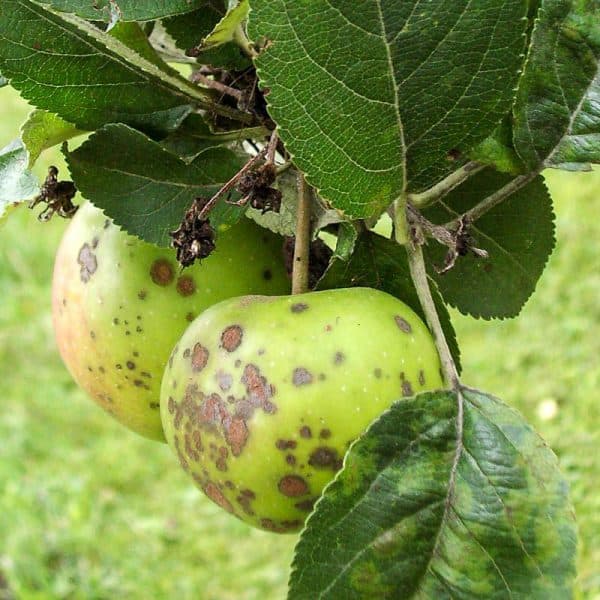
If the scab was found on one tree, all horticultural crops are treated (including those that do not show signs of the disease).
Scab spores overwinter in fallen leaves and unripe fruits. In early spring, when the humidity is still quite high, the spores are dispersed - by birds, by the wind. Disease outbreaks occur at times when humidity is very high. Fungi develop on the apical leaves of the shoots at an ambient temperature of about 12 degrees. At first, small specks of olive color are distinguished on young leaves, if nothing is done, over time they acquire a brown tint. When shoots, pedicels, ovaries are damaged, decay processes begin. After harvesting, the fungus does not disappear anywhere and continues to actively develop in foliage and fruits. In the fall, the spores mature completely and prepare for winter.
The main signs of scab infestation are:
- olive round spots on young shoots;
- an increase in spots up to 13 mm in the spring season;
- the formation of dark streaks on the fruit;
- cracking of spots as the apples grow, the edges of the affected areas have a light shade;
- small and ugly fruits (not all, but a lot);
- early leaf fall (if the infection occurred in the spring);
- swelling of the bark, followed by cracking and flaking;
- slowdown in growth and death of shoots.
Since almost all parts of the tree are affected, it is very difficult not to notice the scab. A characteristic feature - apples become ugly, unappetizing and tasteless.In order to timely detect the disease, regularly inspect the garden for the presence of pests and infections. Read about the fight against the flower beetle on the apple tree at this link.
Where does the disease on apples come from and is it harmful to humans?
Apple scab is a fungal disease. The disease is caused by marsupial fungi that affect both the leaves and the apples themselves.
Scab is often found in regions where the climate is temperate, and in spring it is especially cold and humid. If the summer is rainy, then the defeat of the garden by this fungus can reach 90%.
There is no consensus on whether it is possible to eat apples with scab. But most doctors do not recommend eating fruits that are affected by the fungus.
Recent research has shown that the fungus that causes scab infestation can release a variety of mycotoxins. The harm of the latter to the human body is more dangerous than some pesticides. The negative effect of toxins in the fungus on tooth enamel has also been proven. Eating infected apples leads to tooth sensitivity and tooth decay.
Treatment
Since scab is a dangerous and rapidly spreading disease, measures must be taken immediately after infection. With advanced forms, only chemical preparations are effective.
Folk remedies are a good way to treat scab, but only in the early stages.
Bordeaux liquid
Bordeaux liquid is a primary scab remedy that can be used alone or in combination with other formulas. It belongs to drugs of 3 and 4 hazard classes - others cannot be used in the garden.
Treatments are carried out using a special sprayer, make sure that the mixture is evenly distributed.
Remember to use personal protective equipment.
Weak-resistant varieties are sprayed many times; for crops that are more resistant to scab, a couple of treatments will be enough.
Chemicals
The main chemicals used to treat scab are:
- "Raek" is a long-acting fungicide, the effect of the use of which lasts for 3-4 weeks. The active substances are not washed off by rain. The maximum number of treatments per season is 4.
- "Speed" - two spraying is done per season. The active substances last for 20 days.
- Horus is an effective scab remedy that remains active even at freezing temperatures. Action 30 days, rain is not washed off. In the season, two treatments are needed - before bud break and after flowering.
- "Strobi" is a complex fungicide that is treated three times a season. Strobi protects the tree from scab and other fungal infections. The duration of the drug is 35 days.
- "Fitolavin" is an antibiotic, the maximum number of treatments per season is 4 with an interval of 20 days.
Biological formulas like "Gamair", "Fitosporin" are also in demand. They have high efficiency and low toxicity.
Folk remedies
If the disease has not spread throughout the garden, you can try using folk methods to treat trees. The first recipe is treatment with mustard solution. The dry powder is mixed with a small volume of water, then the solution is added to 10 liters of heated water and used to spray the trunks, trunk, leaves. Do the treatments immediately after rain, in spring and summer there can be quite a few of them. The second option is a solution of potassium permanganate. As in the case of mustard, a lot of processing will be required. The following tools also help a lot:
- Urea solution - 700 g of active substance per 15 liters of water. Processing is carried out in the fall.
- A solution of soap and linen soda - 50 g of grated soap, 6 tablespoons of soda, a bucket of water. Spray after flowering.
- Mullein - to make an infusion, dilute 500 g of mullein in 20 years of warm water, let it brew for a couple of weeks, dilute (10 liters of infusion for 20 liters of water). Process fruit trees.
- Ash broth - take half a bucket of ash and water, 50 g of household soap. Learn about the use of ash for currants from this material.
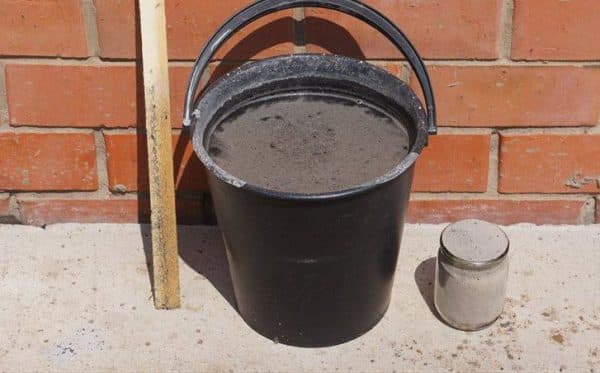

Ashes need to be boiled for an hour, cooled, mixed with grated soap and used for spraying.
Mineral fertilizers
For prophylaxis, in the spring, the apple orchard is treated with mineral fertilizers - this is potassium nitrate, potassium salt, potassium sulfate, ammonium nitrate. In autumn, trees and tree trunks are sprayed with a urea solution. The point of top dressing is that trees that have enough minerals are less susceptible to the development of diseases. The main thing is not to overdo it - an excess of nutrients is just as bad as a lack of them. Read about whitewashing apple trees here.
Folk remedies
Scab on an apple tree can be treated with folk remedies. For the most part, they are effective, but only at the very beginning of the infection, in the first stages. Here is some of them:
- using dry mustard powder. This remedy as a preventive measure and as a means of control will help protect against scab. You will need 4 tablespoons of dry powder in a bucket of water. For prophylaxis, the agent is used at the end of May, and then, as necessary, in cases of infection;
- potassium permanganate. This is the well-known potassium permanganate, which helps in the fight against scab and even destroys spores. Spraying can be carried out at any time during the season, but it is important not to make a too thick solution so as not to leave burns.
These products are safe for people and animals, this is their huge plus. But they will not give the desired effect with a large degree of damage.
Prevention
Preventing the disease is much easier than treating it later, so scab prevention is important. Main measures:
- Choose the varieties that are most resistant to this pest.
- In autumn, collect leaves, branches, fruits and remove them from the site.
- After the onset of persistent frost, dig up the soil around the trees - the spores should not be in favorable conditions for them.
- When harvesting, strip the bark to healthy wood, then whitewash with the addition of a solution of copper sulfate.
It is very advisable to observe the agrotechnology of cultivation and feeding - the scab loves dampness and thickened plantings, unkempt, shaded places. Choose lighted areas, carry out planned sanitary cleaning of the garden - and many problems can be avoided.
The same apple tree behaves differently in different climatic conditions. Choose a variety taking into account the characteristics of the growing region.
How does an excessively rainy summer affect apple trees?
In rainy weather, apple trees are affected not only by scab, but also by other diseases:
- Powdery mildew - most often affects the apple tree in spring at low temperatures and dampness;
- Moniliosis - damages fruits at the end of August;
- Bacteriosis - The apple tree can get sick when it rains and downpours at high temperatures.
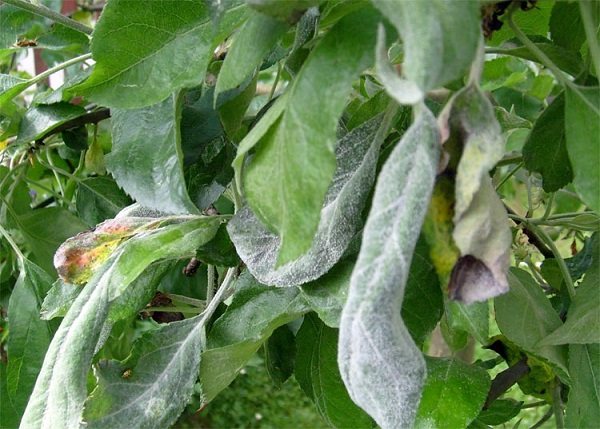

Powdery mildew.
Scab resistant varieties
Most of the columnar varieties, such as Ostankino and Currency, are resistant to this disease. Consider the most scab resistant varieties:
- Julia is a Czech early-growing selection. The fruits are medium in size and weigh up to 150 g, the skin is light green, the pulp is tender, juicy, the taste is sweet and sour.
- Greensleaves - the variety came to us from England, ripens in the fall. The early maturity is good, the yields are high. The fruits are medium in size, weighing up to 180 g, spherical, green-yellow peel.
- Gold Rush is a winter variety that begins to bear fruit early and gives high yields. The fruits are medium, round, with a green-yellow skin, the flesh is dense, green-creamy.
- Topaz is a Czech winter selection, it bears fruit regularly, the yield is high, it gives fruits of medium size and weighing about 150 g. There is a brown-red blush on the skin.
- Modi is an Italian selection with a late ripening period, belongs to the early-growing, bears fruit every year and is very abundant. The fruits are large, one-dimensional, the skin is green.
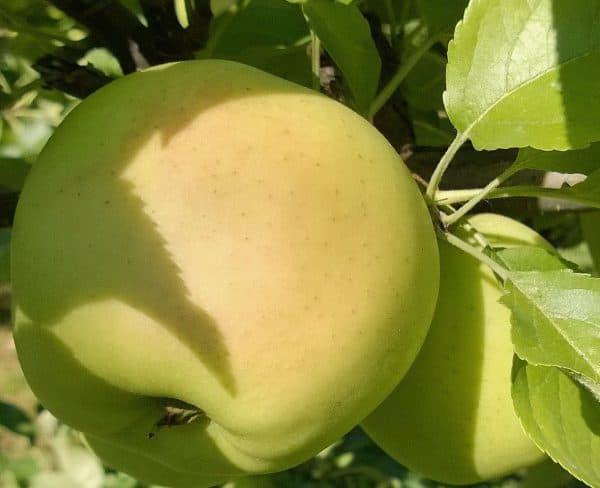

Apple variety Gold Rush.
Most scab-resistant apple varieties are also winter-hardy.
Scab lesions
Visual inspection is an important part of apple tree care. First of all, you need to pay attention to the new, young leaves. It is on them that lesions first appear. After they go further along the branches and petioles. As a result, even on the fruits, ugly spots appear, which negatively affect the taste and shelf life.
The trunk circle is another hotbed of disputes. The experience of gardeners will help to answer the question of how to deal with pathogens in the fall. It is important to clean and whitewash the bark, remove debris in the trunk circle and dig up the soil in it.
Processing schedule
You can get rid of scab in just one season if you take a comprehensive approach to solving the issue. Use folk methods, mineral fertilizers, fungicides.
Feeding stages:
- Swelling of the kidneys (approximately April 1-15) - "Skor", "Stroby", "Raek", Bordeaux liquid, ash decoction.
- Dissolving buds (April 15-20) - "Khrus", Bordeaux liquid, potassium chloride, ammonium nitrate.
- The appearance of corollas (approximately April 20-25) - wood ash, Bordeaux liquid, "Khrus".
- Stage of pink buds (end of April) - potassium chloride, "Raek", ammonium nitrate, Bordeaux liquid.
- The beginning of flowering and mass flowering (until May 20) - "Strobi".
- End of flowering (until May 25) - "Khrus", "Raek", "Skor", Bordeaux liquid, marigold infusion, soap and soda solution.
At the harvesting stage, treatments are carried out with urea, mullein and Bordeaux liquid. Read about the processing of currants with Bordeaux liquid in spring here.
How to fight in July
July is the hottest season, the beginning of active growth. During this period, top shoots grow especially. Not only do they thicken the crown, they are also at risk, because they are young and fresh.
Therefore, first of all, in order to destroy or prevent the appearance of fungal diseases, it is better to completely remove the spinning shoots. If the disease has already manifested itself, then it must be treated immediately so as not to damage the fruit.
If you plan to use chemicals, you need to use only those that do not pose a strong hazard. It is also worth considering that 30 days before maturity, you can spray with substances that do not linger for a long time. After the second half of summer, it is better to use biological drugs or folk remedies.

